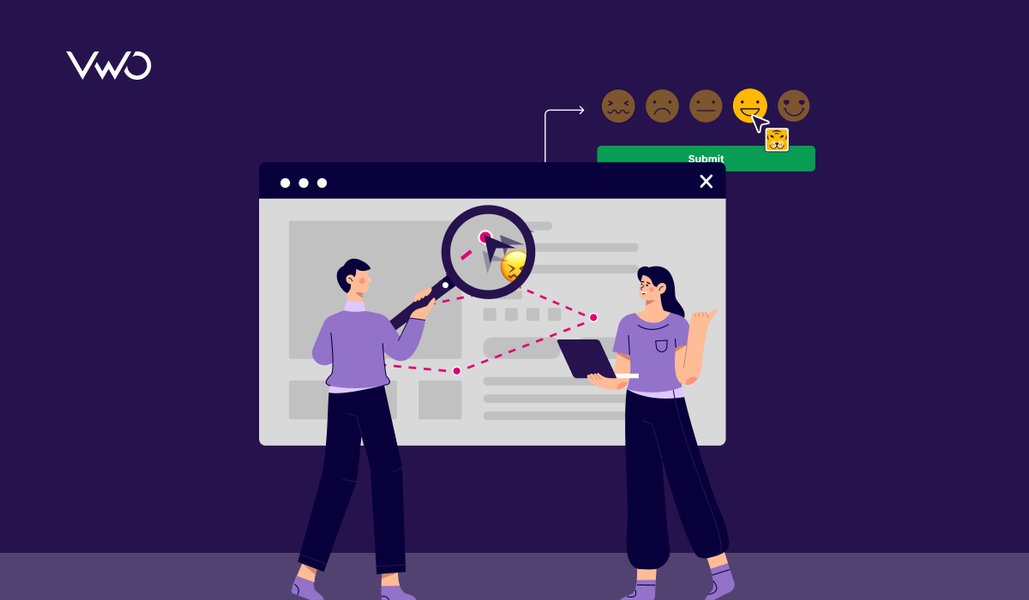At VWO, we passionately believe in empowering women and fostering a community of broad learning and sharing. Our ‘Women in CRO” blog series highlights the incredible contributions of women in the field of conversion rate optimization.
By bringing together some of the brightest female minds, we aim to share their stories, expertise, and best practices. Recently, we had the pleasure of hosting Eden Bidani on our podcast series. You can catch the full conversation on Spotify here.
Eden Bidani, the Head of Strategy & Copy at CAPE.Agency, is renowned for her expertise in conversion rate optimization (CRO) and conversion copywriting. With over a decade of experience, Eden brings a profound understanding of how to merge brand messaging with CRO strategies effectively.
Eden’s background is as diverse as it is impressive. With a double major in Anthropology and Sociology, she has a deep understanding of human behavior, which she leverages to create compelling narratives that resonate with target audiences.
In this blog, you will benefit from her unique perspective, essential for mastering the dynamics of conversion messaging.
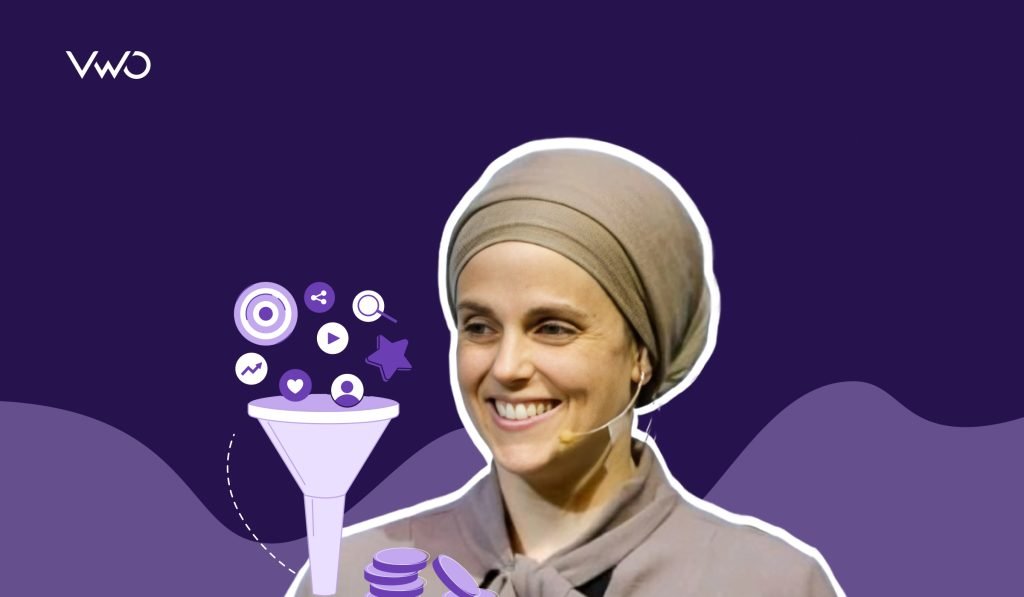
The power of perspective in conversion rate optimization
Anthropological influence on CRO
One guiding principle that has significantly shaped Eden’s life is the importance of perspective. This idea, deeply rooted in anthropology, emphasizes the need to consider multiple viewpoints when analyzing any situation.
It’s a reminder that the saying, “everyone has a right to an opinion,” is itself an opinion, highlighting the value of understanding various perspectives. This approach encourages us to move beyond our initial reactions and explore different angles to gain profound insights.
In the context of conversion rate optimization, this principle is invaluable. It allows us to dig deeper and uncover the real reasons behind user behavior.
At the end of the day, anthropology is trying to see the world from someone else’s perspective, which is huge in CRO because you’re really trying to put yourself in the user’s shoes as much as possible.
For example, if a call-to-action (CTA) button or a headline isn’t performing well, the issue might not be with the CTA or headline itself. Instead, the entire user experience might need re-evaluation. The problem often lies in how different users interact with these elements within the broader context of the site or app. By considering different perspectives, we can rethink our approach and develop more effective solutions.

Case study: IMB bank
IMB Bank leveraged VWO Insights to identify the underlying reasons for user drop-offs and tailored their strategies accordingly. They introduced features like save options and exit pop-ups, addressing the varied needs of users at different stages of the form completion process.
This perspective-driven approach led to an impressive 87% increase in home loan conversions and a 36% rise in personal loan conversions. By valuing diverse user experiences, IMB Bank significantly enhanced engagement and conversion rates, demonstrating the profound impact of a well-rounded CRO strategy. The IMB Bank success story showcases the transformative power of considering multiple perspectives in conversion rate optimization.
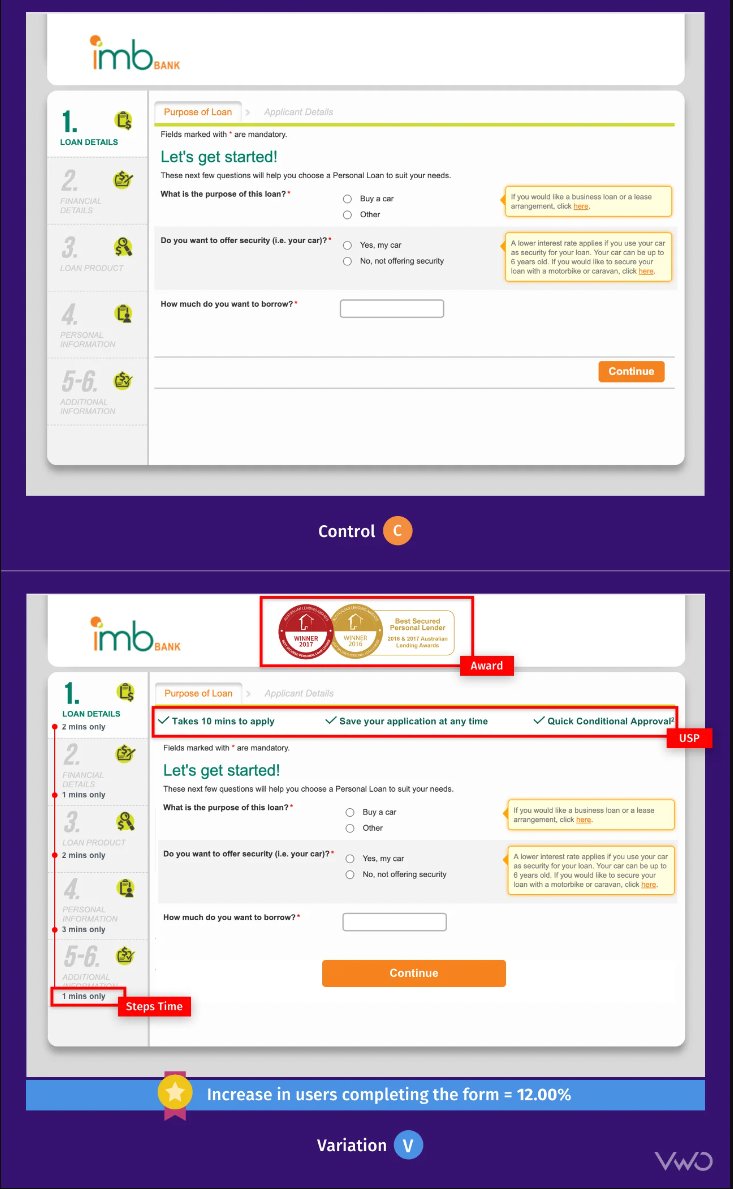
Success through user-centric strategies
Success in conversion rate optimization often hinges on understanding the user experience from multiple perspectives. A notable example of this is a collaboration with John Ostroski, also known as Positive John, a prominent figure in the CRO industry.
Together, John and Eden worked on a project for a company called Brainly, aiming to increase the number of signups for their web app. Initially, users were required to enter their information to access a single answer before being confronted with a blurred paywall-like screen, prompting them to download the app for full access.
Despite a clear and compelling copy, the approach was met with frustration and negative feedback from users.
Recognizing this, they hypothesized that the paywall was perceived as a roadblock. Instead of emphasizing the app’s benefits, they proposed a simple change: prompting users with a straightforward message to unlock more answers by downloading the free app.
The revised approach, “Download the app to reveal more answers. By the way, it’s free,” immediately resonated with users. The results were striking, negative feedback disappeared, and app downloads doubled instantly.
By removing the perceived barrier and aligning the call-to-action with user expectations, they transformed the conversion process into a logical and appealing step. This experiment highlights the power of understanding user perspectives and adapting strategies accordingly.
We simply took away that illusion of a roadblock and said, look, you can get more answers if you do this one thing, making it seem like downloading the app was the logical choice.
Embracing experimentation for a better business strategy
Understanding the role of experimentation in business strategy is crucial. It’s no longer just about tweaking product features or testing ads, it’s about driving fundamental shifts in how companies operate.
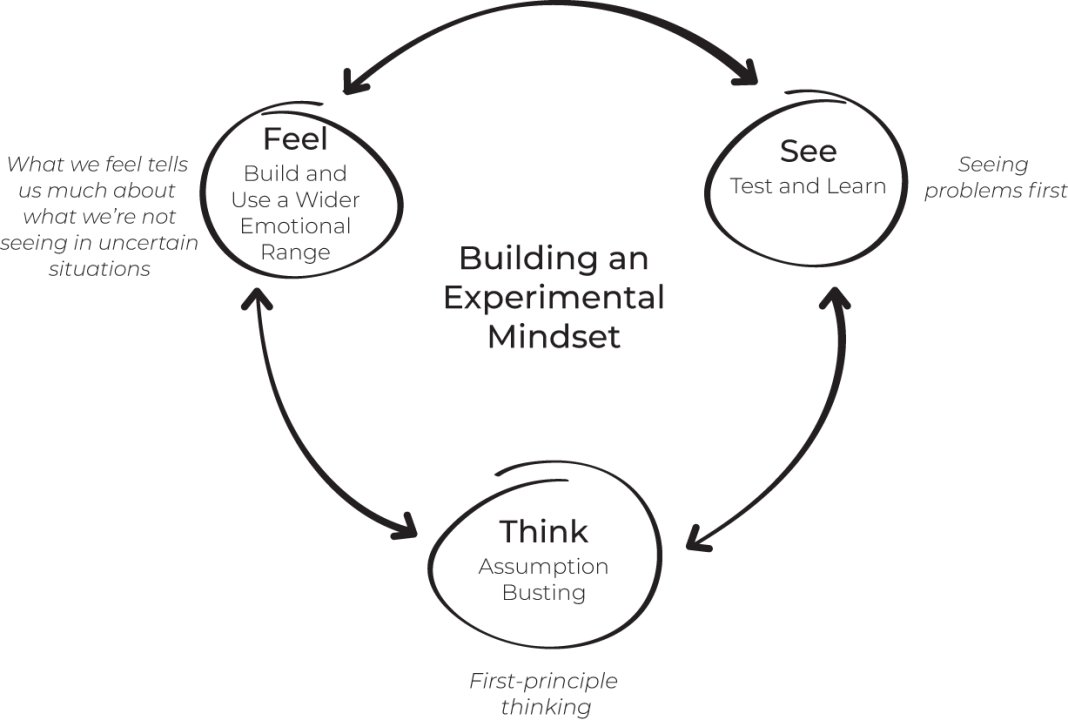
Many businesses struggle with the alignment between their visual identity and brand voice. For instance, a corporate-looking brand trying to convey a fun and youthful copy creates confusion. This is where experimentation comes in. Testing different copies written in various tones can help businesses understand which ones resonate with their target audience, thereby bridging the gap and ensuring a cohesive brand presentation.
It digs deep into these alignment issues, which is crucial for achieving broader business objectives. It prompts us to ask critical questions about the company’s evolution and the necessary adjustments to stay competitive.
For instance, one of Eden’s Enterprise clients in the DevOps sector underwent a rebranding and product expansion a few years ago. However, they encountered challenges such as a loss of brand identity and difficulties in reconnecting with their audience.
Yet, through strategic experimentation applied not only on their website but also in sales pitches and storytelling, they crafted a narrative that clearly defines their identity, offerings, and value proposition. This proactive approach swiftly reignited interest among buyers and industry peers, revitalizing their market position.
Experimentation now plays a pivotal role beyond traditional marketing functions. It serves as a strategic advisor, influencing key business decisions informed by robust insights.
I think you know there almost needs to be a chief experimentation officer that works alongside the CEO that has that equal say because then they’re able to be in touch with all the departments.
Regularly test new ideas, analyze results, and iterate based on findings. This approach not only helps in refining your CRO strategies but also keeps your business agile and responsive to changing market dynamics.
So, the next time you think about experimentation, think beyond simple tests and optimizations. By validating hypotheses through targeted strategies, businesses can proactively adjust their digital presence to align with strategic goals.
Here are some great A/B testing ideas to start implementing.
The future of CRO
The future of conversion rate optimization is an evolving landscape, with potential shifts in how it integrates with other business functions. As the industry continues to develop, a pressing question is whether CRO will remain a standalone discipline or become integrated into other departments.
Currently, CRO sits at the intersection of marketing and product, reflecting its dual nature. It involves aspects of both marketing strategies and product development. One possible future for CRO is its absorption into product departments.
As product marketing increasingly encompasses vision, positioning, messaging, and content creation, it seems logical that CRO could become an integral part of this function.
This would allow for a more holistic approach to optimization, tied directly to product development and marketing strategies. Additionally, there is a growing emphasis on feature experimentation and pricing experimentation within product development. These elements are crucial for optimizing user experiences and driving conversions, yet they often remain underutilized.
Ultimately, the integration of CRO with product and marketing functions will enhance its impact on business strategies, enabling companies to stay ahead of market trends and better meet the needs of their audiences.
A crucial step in copywriting
When it comes to tailoring web copy or any form of content to resonate with your target audience, the first step is to gain a deep understanding of who they are and what they value.
According to Eden, the most impactful approach is to engage directly with the customers. Conducting one-on-one interviews allows for valuable qualitative insights that can shape your messaging strategy.
There’s no substitute for hearing firsthand from someone who has purchased and loves the product. They can articulate the benefits and value in a way that directly informs you about your copywriting efforts.
Nothing compares to being able to sit down for a few minutes with someone who bought the product and loves it, and now they’re going to tell you why they love it and what the value is in it.
If direct interviews aren’t feasible, running surveys can also provide valuable insights. However, it’s essential to go beyond simple yes or no questions. Asking open-ended questions, such as “What is the one most impactful thing this product has done for you?” encourages customers to share detailed feedback about their experiences and the value they perceive in the product.
Understanding how customers perceive the product and how it fits into their lives is crucial for effective communication. It informs not only the content of your copy but also the overall user experience, from layout to UX design.
This deep understanding allows you to position your product or service in a way that resonates with your audience, ultimately helping you reach and connect with more customers.
VWO Surveys’ new AI feature makes it super simple to get the insights you need. It summarizes survey responses into clear, actionable insights based on scientific principles.
Plus, advanced filtering helps you dive into how different visitor segments are thinking, so you can get to know your audience better.
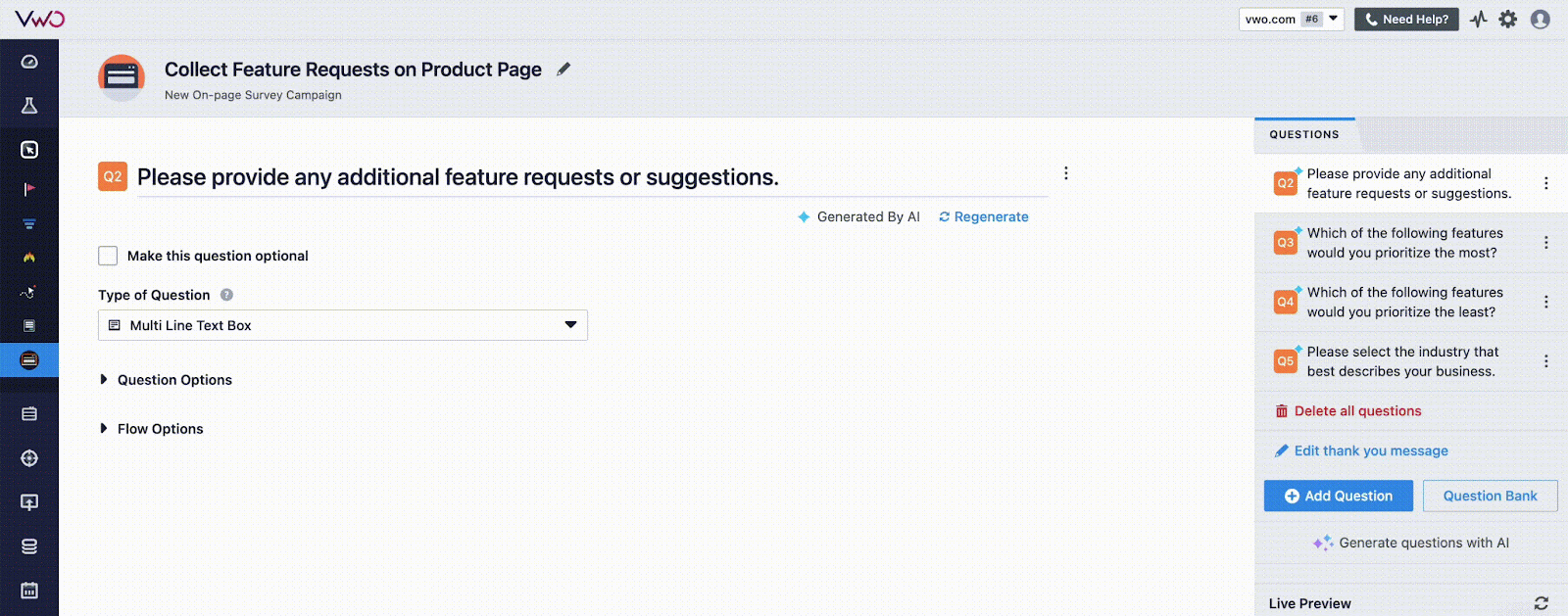
Conduct thorough user research, including direct interviews and surveys, to gather qualitative insights. Use these insights to shape your messaging and align it with user expectations.
Overcoming client skepticism about copy’s impact
One common challenge when working with clients across different industries is conveying the significant impact that a simple change in copy can have on conversion rates.
Often, clients may underestimate the influence of copywriting and question its ability to drive meaningful results. It’s important to know that copy is just one element of the user experience, but it has a significant impact on the entire experience.
Copy is one element of the user experience, but it has an impact on the entire user experience.
While design, UX/UI, and other elements are undoubtedly important, copy serves as the interface between the audience and the product or service. It guides users, helps them understand the product or service, and persuades them to take action.
Unlike visuals, which can capture attention, copy provides the crucial context and rationale for why users should engage or convert. Some clients may cite examples like Apple or Nike, known for minimalist ads or iconic images.
However, these global giants have invested billions in building brand recognition over many years. For newer or lesser-known companies, effective copywriting is essential for communicating value proposition and differentiation.
Crafting effective landing pages through customer-centric research
Eden shares an example of a luxury women’s brand from Belgium that aimed to create a compelling landing page highlighting their product’s benefits.

Customer feedback played a pivotal role in shaping her strategy. Through interviews with five customers, Eden discovered profound insights into how their luxury work bags transformed daily routines.
One customer, a teacher, vividly described her previous struggle with three separate bags—a gym bag, a lunch bag, and a work bag. Switching them in and out of her car trunk was cumbersome.
With the luxury work bag, she consolidated everything into one stylish solution. Notably, she emphasized that it “does not look like a mom bag,” explaining that such bags are perceived as useful and unfashionable, akin to airplane or trolley luggage.
Younger customers echoed similar sentiments, referring to “old duffel bags” and the inconvenience of trolley bags. Despite demographic differences, overlapping descriptions influenced the landing page content strategy. To appeal broadly to both middle-aged women and younger professionals, they had to prioritize universal language.
When you do this process of customer research, try to look for common denominators if you’re going for a broader audience, not just a specific demographic.
By incorporating customer feedback directly into the landing page, focusing on eliminating stereotypes like “mom bags” and highlighting practical elegance—the brand achieved remarkable results.
This inclusive approach has sustained the page as their highest-converting asset for nearly three years, demonstrating the power of customer-centric strategies in conversion rate optimization.
Integrating personalization into your marketing strategy can further enhance customer-centric efforts. With VWO Personalize, brands can dynamically adjust landing page content based on real-time visitor data and preferences.
This capability facilitates the creation of personalized experiences that resonate deeply with diverse audience segments, fostering higher engagement and conversion rates.
By leveraging insights from customer behavior and preferences, brands can craft tailored messages and offers that meet individual expectations, ultimately driving long-term success and customer loyalty.
Balancing career and life as women in business
Reflecting on her journey as a working mother with seven children, Eden underscores the importance of balance and embracing life’s experiences. She challenges the notion that women must sacrifice personal fulfillment for professional success, advocating instead for pursuing one’s passions while cherishing life’s milestones.
In a world driven by the pursuit of perfection, she encourages women to honor their efforts and recognize that even partial success contributes positively to their endeavors.
Eden addresses common challenges faced by women in business, including the pressure to adhere to societal expectations of perfection. She urges women not to delay life experiences or aspirations in pursuit of career advancement, emphasizing that personal fulfillment and professional success are not mutually exclusive. By embracing imperfection and navigating life’s journey with resilience, women can carve out fulfilling careers and lead balanced lives.
Final thoughts
Watch the full video to further enjoy our conversation with Eden Bidani and gain valuable insights into copywriting and CRO.
As we wrap up, it’s clear that successful conversion optimization goes beyond mere tactics; it’s more about seeing through the eyes of your audience. By embracing their perspectives and continuously experimenting, you can create authentic connections and drive meaningful results.
Keep pushing the boundaries, stay curious, and always strive to understand the ‘why’ behind user behaviors. Subscribe to the VWO podcast today to keep learning from industry leaders like Eden Bidani!









